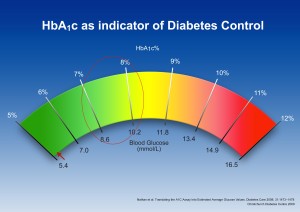“I’m a 5’10” guy who weighted 180 lbs. I run about once a week and honestly don’t do much else. I cut out beer and all refined sugars (which included a few servings/day of bread and pasta) and lost 15 pounds in 7 weeks.
I feel like a million bucks. It’s crazy how my legs and arms where there was seemingly no fat all became more defined and skinnier.
The best part – I make a full packet of bacon every Sunday and eat it over the course of the week and I absolutely stuff myself with the good stuff you’re supposed to eat – salted cashews, sweet potato fries, fruits and vegetables etc…”
– Taken from some random comments section from a blog (can’t remember where, sorry)
Not your experience? You’re not alone. Though I know those struggling to lose weight on a low carbohydrate high fat (LCHF) diet do feel they’re the only one not stripping off fat faster than they can pour the cream into their coffee. Unfortunately the mantra ‘fat doesn’t make you fat’ probably requires an asterisk, and an explanation. Along with ‘calories don’t count.’ These are related. A good friend of mine was struggling with unwanted weight gain on LCHF. She had listened to what people were doing with the diet and had swapped breakfast for a couple of coffees with cream, wasn’t eating lunch but perhaps grazing on some nuts or cheese during the day and having a big dinner at night that was eaten quite quickly because she hadn’t really had the pleasure of eating all day. Her one concession on LCHF was white wine and not that she drank often, but the couple of nights a week she did drink, it was definitely more than your standard two glasses. Lacking in energy, motivation, and frustrated with the betrayal of both her body and the diet, she asked for my advice. How come everyone else was losing weight but she wasn’t?
It’s too easy to think that the LCHF diet is the panacea for weight loss and weight maintenance – and absolutely, if you read my post a few weeks’ ago around LCHF diets for health and performance then you’ll know it’s at least as effective as your usual low fat regime. Certainly, too, for people I work with it’s an easier lifestyle approach to eating. If I had to put a number on it, about 75% of people I work with take the general guidelines of a LCHF diet, run with it and see considerable success. This includes people who have a history of weight loss, weight gain, and yo-yo dieting. However for some, the switch to a LCHF diet isn’t the magic bullet that it’s purported to be. After an initial drop in body weight (by perhaps 1-3 kg, largely attributable to fluid loss), the body seems to settle into a new ‘normal’ at that point and those last 5kg continue to remain elusive.
Is it the plan itself? No. Any plan that someone can adhere to is going to be successful. But there’s more to it than that. Even people who abide 100% to a LCHF approach can have weight loss stalls and, worse, begin to gain weight. Is it lack of sleep? Thyroid function? Work stress? Not enough exercise*? Too much exercise? Could be. But for some, it actually is the plan. Not in principle though, it’s how they execute the plan. And by all accounts, my good friend had also fallen into this trap.
Where once fat was vilified, it’s now carbohydrate that has been positioned as That Which Must Be Avoided. Problematic because actually there is no good or bad nutrient as a whole. Yes, there are certainly better choices within each obviously (i.e. butter is a much better choice than margarine, and potato or kumara will trump bread every time), but this blanket approach that demonizes an entire class of nutrients can set the scene for an unhelpful (and, at times unhealthy) approach to meals, snacks and eating behaviour. Carrots, pumpkin and beetroot – off the menu. Tomatoes are viewed with suspicion, onions don’t get a look in, and the rainbow of colour in a salad has now been limited to different shades of green and yellow. But it’s not from capsicum (too many carbs!) it’s from half a block of cheese. Now – I know that for some, this actually isn’t an issue and in fact, it’s the best thing they can do for their metabolic health. A LCHF diet makes perfect sense if someone is struggling with blood sugar and insulin control. In fact, for people with diabetes (type 1 and 2), having a very low carbohydrate diet is the best thing for them (why add fuel to an already out-of-control fire?) People either forget (or don’t realise that LCHF is generally 25% of so calories from carbohydrate which can still equate to a good amount of carbohydrate-containing foods. This all or nothing approach to carbohydrate (or… just nothing) is unnecessarily extreme for most people in my opinion. Like Weight Watcher’s ‘fat and fibre’ plan of the 90s, which saw meringue back on the menu for hundreds and thousands of delighted dieters worldwide (and unhelpful for most of those people), it is almost that the ‘no holds barred’ has been shifted from vegetables to foods high in fat. Cream in coffee, nuts in abundance, lashings of butter with everything – because ‘fat doesn’t make you fat’ and ‘calories don’t count.’ For those that can’t effortlessly lose weight with this approach and you have accounted for the lifestyle factors that I mentioned above (as my friend had), then actually you are eating more than you need. If that’s the case, then fat can make you fat and those calories do count.
So what now?
For my friend, and others who come to see me, what actually worked was taking another approach. Still LCHF. But not as LC. And not as HF. It also included a lot more protein. It is an approach to eating that is sustainable in the long term. Remember that the premise of LCHF is a nutrient-dense, real food diet. For my friend:
- I got her to drop dairy – not because it is inherently bad, but because her sources of dairy were only high fat and in larger amounts than I think she was aware of. It was easier to omit entirely in this instance.
- I got her to start eating breakfast again and to include starchy carbohydrates. Not in large amounts! But enough to help her feel satisfied between her meals and also happy with a standard pour of wine from the bar and not a large. For some, restricting carbohydrate can lead to increased desire to drink more alcohol (or gave them licence to do so). This also helps people recognise that carbohydrates shouldn’t be vilified the way we did fats.
- I also got her to sit down when she ate and told her to eat slowly, enjoying her meals and to never eat standing up. That way she knew what (and how much) she was eating.
- I suggested that she cut nuts and seeds unless part of a salad meal and that she aimed for three meals a day and no snacks.
- If she was hungry in between meals, then I asked her to increase the protein portions of her food, as this would keep her satisfied. For my friend, it wouldn’t have been helpful to focus on increasing the fat as it didn’t work for her previously.
- The protein foods she ate weren’t necessarily lean, nor did she seek out the fattiest cuts she could find. She ate a broad spectrum of quality protein foods.
- She ate non-starchy vegetables in abundance.
While initially suspicious of this approach, she very quickly saw success. In fact, over the course of four weeks, she had dropped 5.5kg. Her meals were still lower in carbohydrate, and higher in fat – but also included good amounts of protein and a lot more nutrients overall. For my friend, this ‘back to basics’ approach to diet was just what she needed. It was both the food choices and the behaviour around food that we needed to change. Though weight was her initial measure, she told me the change in how she felt about herself and about the food was far more important.
If you are struggling to lose body fat with a LCHF diet, then remember the devil could be in the details. In my opinion it really is the panacea for optimising your body composition goals, but it might be that the way you execute it needs adjusting.
*fat doesn’t make you fat: unfortunately, eating too much fat could make you fat – because too much of anything can lead to an excess in energy that your body can’t burn and therefore it has to go somewhere – deposited into your fat tissue is the likely scenario.
*calories don’t count: calories do count. But the finer details relate to how your body burns those calories and available energy.

